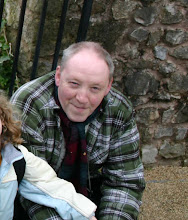Mining information at the Mining Institute
This post was written by Robert Forsythe, former Wikimedian in Residence at Tyne & Wear Archives & Museums
For fans of the Victorian Gothic and Dr Who’s Tardis, a visit to Newcastle upon Tyne’s North of England Institute of Mining and Mechanical Engineers (also known as “The Mining Institute”) is a must. The building is an outstanding creation in the Victorian Gothic style and, as with the Tardis, it is much more spacious than the outside might suggest.
Robert Forsythe began talking to the Mining Institute about a relationship with Wikimedians in the summer, a relationship cemented by a visit from Harry Mitchell – which itself was a direct result of the first Newcastle meetup in September. The outcome was a very successful editathon at the North of England Institute of Mining and Mechanical Engineers on 6th November. Harry Mitchell led the event and 12 people attended from the North East of England. Four Wikimedians (Peter Gans, Dan Garry, Chris McKenna, and Harry Mitchell) travelled to Newcastle to assist. One newcomer to Wikimedia travelled all the way from Plymouth and was so impressed by the day she requested an editathon for her institution. At least five new accounts were created on the day (several people had already created accounts in anticipation of the event) and the new editors, helped by the experienced Wikimedians, made edits to multiple articles relating to the Mining Institutes’s collection and uploaded a couple of images to Wikimedia Commons.
The exercise was designed to develop relations between the staff and volunteers of the institute and Wikimedians. It was a great success in this, partly because some of the Wikimedians who travelled in came the night before and attended a lecture by Bill Lancaster in the Mining Institutes’s lecture theatre. The lecture revealed that key contributors from the North East have not been well served by classic academia despite a wealth of information existing about them. Bill Lancaster expressed the hope that Wikimedia could be a tool to pay people like Christopher Blackett and Edmund Mills Hann their due.
A number of the institutes’s trustees and management team spoke directly about the opportunity they saw over the two days the Wikimedians were in town. As part of the learning curve, Jennifer Hillyard, the institutes’s librarian took everyone on a tour of the institute. This included seeing a very early painting of the coal industry whose uploading to Wikimedia Commons she suggested. The Institute has always had an excellent library. However in recent years some very significant collections threatened by the implosion of Britain’s coal mining industry have arrived. All of us were somewhat stunned by 16 roller racked rows of material which had arrived. One whole row contained 16,700 pamphlets from the Coal Research Establishment in Stoke Orchard (near Cheltenham). Another massive rack is full of German mining resources. The institute is therefore in pole position in terms of providing an authoritative view into the mining world of Britain and further afield. And it wishes to see Wikimedia Commons, Wikisource, Wikipedia contributions as routes whereby its increasingly very rare holdings are made available to the world wide audience.
Discussions are ongoing about the possibility of a follow-up event and about other projects which can be undertaken with the Mining Institute so watch this space.
Robert Forsythe was previously the first Wikimedian in Residence in the North East of England, serving with the Tyne & Wear Archives & Museums service. Since the summer he has been assisting the Mining Institute develop its Wikimedia relationship. Along with Harry Mitchell, Robert ran the event.








No comments:
Post a Comment